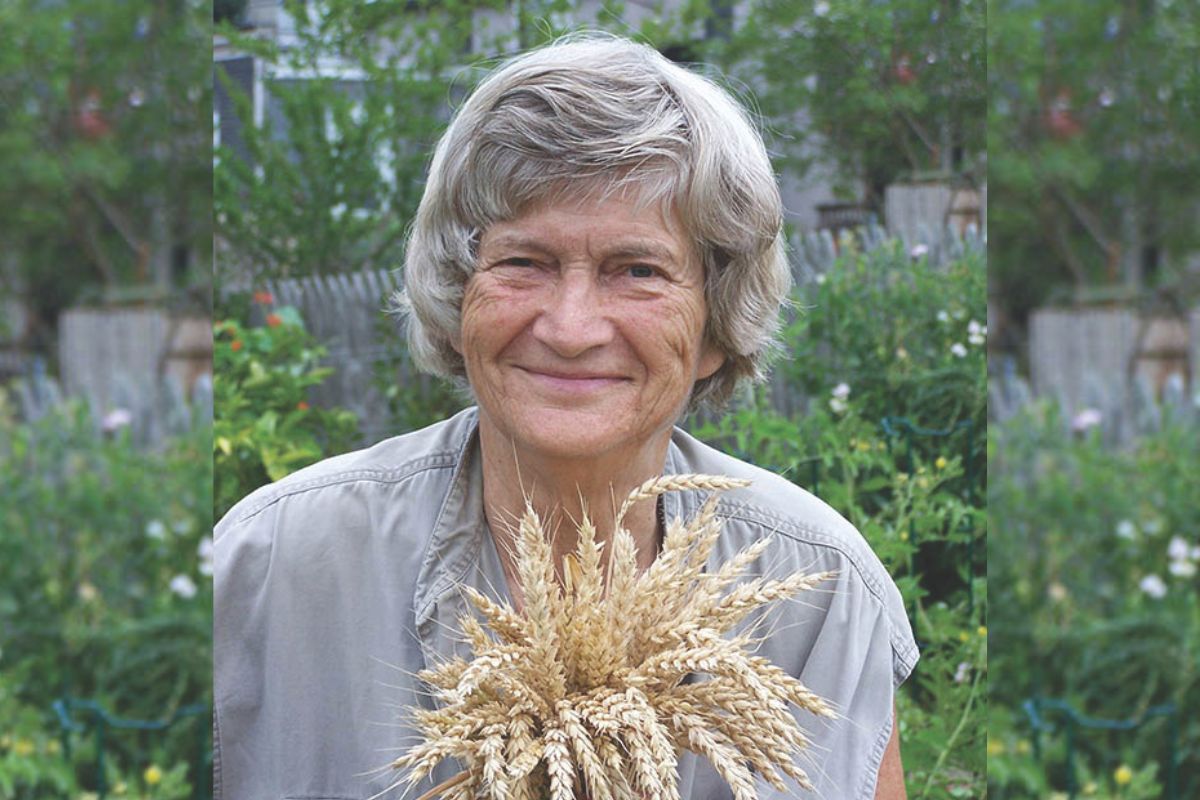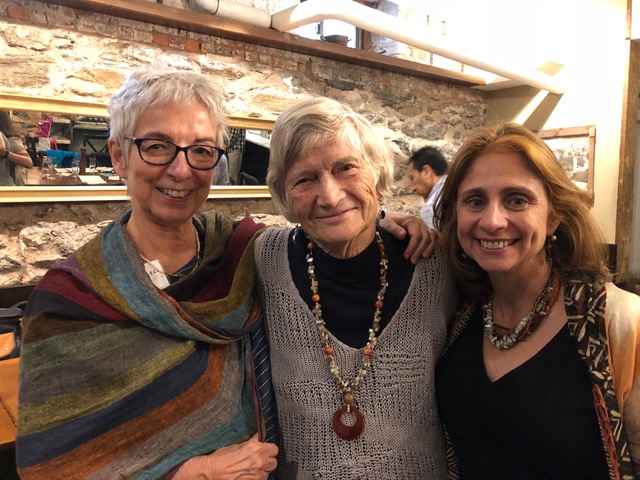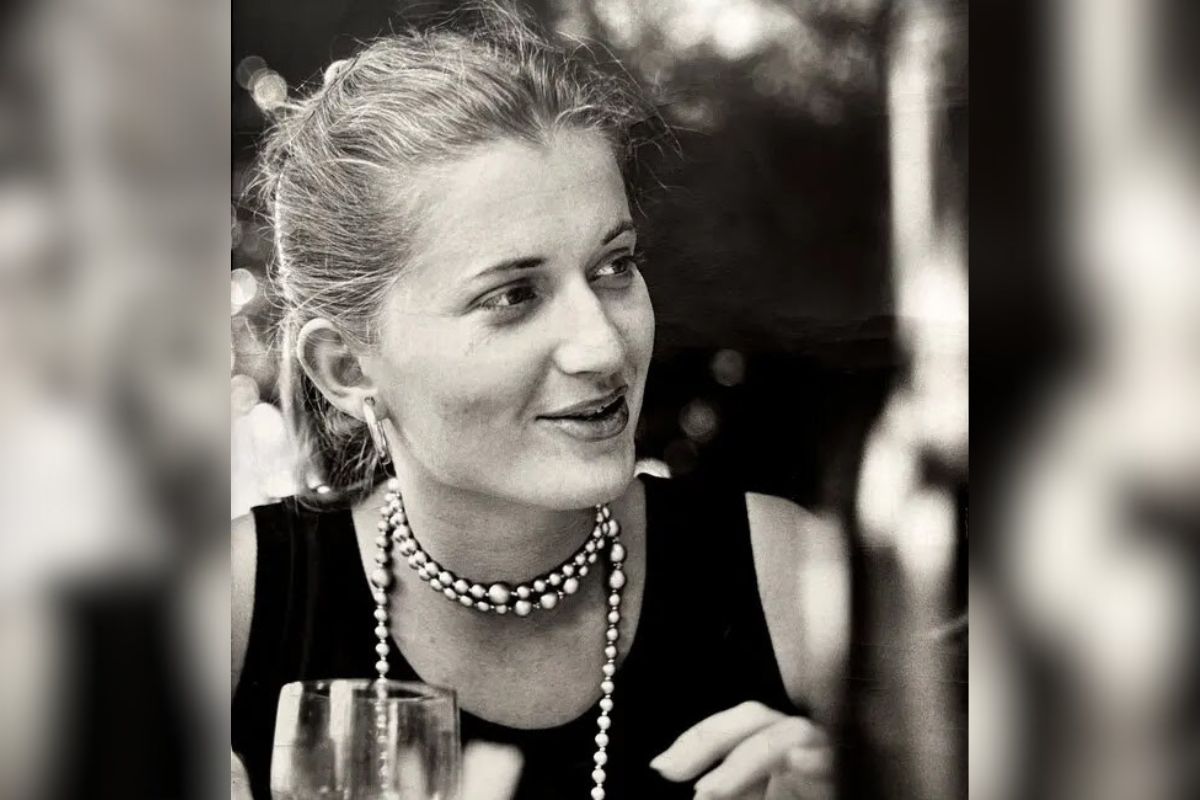The early 1990s were heady times for the organic food movement. Congress had passed the Organic Foods Production Act, creating a National Organic Standards Board that, in addition to members of the organic community, included representatives from Big Food and Big Agriculture. Writers such as Michael Pollan and Alice Waters were coming on the scene.
For most people interested in healthy eating, it was a time to celebrate — but Joan Gussow’s reaction was to see if she could make an organic Twinkie.
At a certain point, “it occurred to me that they were trying to make sure we could produce an alternative food system that was organic that looked just like the present food system,” later recalled Gussow, the legendary Teachers College nutrition educator, crusader and iconoclast, who passed away this week at the age of 96. “So I said, what would you have to do to make an organic Twinkie, because that seemed to me the height of junk food. And it turned out that you could use all the same ingredients, substituting organic sugar and flour and a few other items, and it would be certifiable. But was that a good idea? Was it what we really meant by organic?”

Joan Dye Gussow (Ed.D. ’75), TC’s Mary Swartz Rose Professor Emerita of Nutrition and Education, who was hailed by The New York Times as “the matriarch of the eat locally, think globally” food movement. (Photo: TC Archives)
The Root of a Movement
It was a typical response from Gussow, who was hailed by The New York Times as “the matriarch of the eat locally, think globally” food movement. Gussow, the former chair of TC’s Nutrition Education, was a big-picture thinker who shifted the focus of nutrition education to, as she put it, “whole foods, not collection of nutrients, as the fundamental unit for eaters and educators as well as researchers.”
In a career that spanned more than half a century at Teachers College, Gussow “challenged nutritionists everywhere to look up from their microscopes to see the cafeteria, the factory farm and beyond,” wrote Edible Manhattan in 2010. Her many contributions included numerous landmark books such as The Feeding Web: Issues in Nutrition Ecology; The Nutrition Debate (with Paul Thomas); her leadership on national boards and organizations, including the FDA’s Food Advisory Committee, and the Society for Nutrition Education; and perhaps most notably through her legendary course “Nutritional Ecology.”

Colleagues visited Joan Gussow for her 96th birthday in the fall. Pictured from left to right: Sharon Akabas, the former director of the M.S. program at the Columbia University Institute of Human Nutrition; Randi Wolf, Ella McCollum Vahlteich Professor of Human Nutrition; Pam Koch, Mary Swartz Rose Associate Professor of Nutrition and Education; the late Joan Gussow; Isobel Contento, Mary Swartz Rose Professor Emerita of Nutrition and Education; and former adjunct faculty member Toni Liquori (Ed.D. ’96). (Photo: Paul Thomas)
These and many other contributions ultimately earned her nutrition education’s highest honor — the Helen Denning Ullrich Award of Excellence in Nutrition Education from the Society for Nutrition Education and Behavior (SNEB) — and won her accolades from some of the most prominent names in the field.
Pollan, author of The Omnivore’s Dilemma and In Defense of Food: An Eater’s Manifesto, credited her as one of his most important teachers in learning about the food system. Famed nutritionist and media personality Ellie Krieger (M.S. ’94) has said that Gussow “absolutely transformed the way I think about food and nutrition and ultimately shaped my approach to it.”
And writing this past week on her website, the molecular biologist and nutritionist Marion Nestle called Gussow “a food systems thinker before anyone knew what a food system was.”
Breaking New Ground
Ultimately, Gussow became recognized for focusing on what her long-time colleague and former student, Pamela Koch, Mary Swartz Rose Associate Professor of Nutrition & Education, calls “the big picture of food issues and sustainability.”
“Her concern was ‘before the swallow’ — all the things that have to happen for us to get our food,” said Koch. But communicating that vision was, for many years, an uphill struggle.

Gussow (center) with Toni Liquori (Ed.D. ’96) and Pamela Koch, the current Mary Swartz Rose Professor Emerita of Nutrition and Education. The endowed chair honors Rose, a pioneering TC professor and researcher who established the field of nutrition education at the College. In addition to Gussow and Koch, the professorship has been held by Isobel Contento. (Photo: TC Archives)
Gussow was called an anti-feminist by some for her 1988 article in the Journal of Nutrition Education (JNE) arguing that “introducing the public to simple food preparation skills that will enable them to cook the foods we teach them to want to eat.”
She earned the ire of food corporations for her 1972 article “Counter-nutritional Messages of TV Ads Aimed at Children” and her testimony before Congress about the poor quality of foods advertised to children on television. (Her research showed that of 388 network commercials over the course of 29 hours on Saturday mornings, 82 percent were for food — most of it of dubious nutritional value.)
And in 1980, during her own tenure as President of Society for Nutrition Education and Behavior, she led a plenary session on dietary fiber, asking, in essence, whether commercial food companies should fortify processed products with fiber — a development that would undoubtedly increase prices — or, conversely, be urged to modify their processing methods so as to retain more natural fiber in foods.
Gussow staged a mock trial during the session, presided over by a real-life judge and argued by two practicing attorneys.
Seeding Future Generations
Yet ultimately Gussow’s ideas took root — perhaps not least because of her impact on thousands of future nutrition educators in classrooms at Teachers College.
“The life-changing course for me and I’d dare say 98 percent of Nutrition Program graduates, was the Nutritional Ecology class taught by Joan Gussow,” Kate MacKenzie (M.A. ’02) Executive Director of the Mayor’s Office of Food Policy, New York City’s top nutrition post, said several years ago. “The complexity of the food system exposed and really terrified many students. It was mind-blowing to learn about corporate consolidation in the food system, factory farming and the implications of population growth on food supply. And it was learning how the deck is stacked against so many people, in so many ways, that has motivated me to do this work.”
Even now when Randi Wolf, TC’s Ella McCollum Vahlteich Professor of Human Nutrition, speaks with the next generation of nutrition scholars, Gussow’s legacy remains at the forefront.
“Whenever prospective nutrition students ask, ‘why TC?’ — I always say it's because we define nutrition broadly based on the philosophy of Joan Gussow's pioneering work,” explains Wolf, who also serves as director of the program. “Her ideas are fully integrated throughout our entire program, and I am so grateful that generations of students will continue to be inspired by her for years to come.”
Students in the Nutritional Ecology course were assigned readings that ranged from the works of popular writers such as Michael Pollan to a chart Gussow created, titled Organic Industry Structure, which showed the relationships between major corporations and other players.“When money gets hold of it — when the powers that be decide that they want to have a piece of the pie — all bets are off,” Gussow once said.
Gussow also frequently hosted groups of students to her house in Piermont-on-Hudson, 30 miles north of New York City, where they sampled from her garden and absorbed tips on fortifying soil. On several occasions, students returned the favor, helping Gussow rebuild the garden after the Hudson River overran its banks.

Gussow with students at her home in 2019. (Photo: Maria Vullo)
Preaching What She Practiced
Gussow didn’t plan to be a nutritional firebrand. At Pomona College, where she earned her undergraduate degree, she was a pre-med student. She moved to New York City in the early 1950s and worked as a researcher for Time magazine — the only job for which the magazine hired women.
It was only after she and her husband, the artist Alan Gussow, moved to the Piermont area, that she began growing vegetables to rein in shopping costs.
“One reason I started growing my own vegetables 25 years ago was that I came to see that agriculture was in so much trouble, and the only way to change that was to get the average person to know about farmers. But to know about farmers, people had to have farmers nearby — and to have farmers nearby was for people to buy what they grow seasonally,” Gussow once explained. “So really I was promoting a seasonal diet. It had nothing to do with Alice Waters and the taste of things.”
Indeed, Gussow was inspired to use the term “local food” by statistics on the declining number of farmers in the United States. (Farm and ranch families made up less than 5 percent of the population in 1970 and less than two percent of the population in 2023.)

(Photo: Maria Vullo)
Questioning Tomorrow
Gussow pulled no punches when it came to talking about the future of the planet. On one occasion, addressing the Society of Nutrition Education, she warned: “Your children’s children will never see an iceberg. They will never see a glacier. There will be no penguins, no polar bears.”
“We can’t treat nature like a machine,” Gussow said. “We need to be aware of our own ignorance in the face of a mystery like soil fertility and the productivity of the earth before we touched it. The earth was producing long before we came along. We don’t know why or how to make it happen.”
By no means was she giving up, but she felt the forces of change even in the serenity of her Hudson River garden.
“There’s this wonderful term, solastalgia, which describes the sense of loss people feel when the place they love disappears,” she reflected during a visit by students some years ago. “The place you took solace from, and the pain of that disappearance. And that’s what I’m suffering from. It’s very threatening when you’re 91 years old and you lose your garden. What do you do to keep going? Because to have a garden is to have a future and to have a future is to be alive.”
Gussow is survived by her two sons, Adam and Seth, and her grandson. Details for a ‘Celebration of Life’ in Piermont, N.Y., and at Teachers College, Columbia University in late spring are forthcoming.
